Do you have a question about the Triumph Scrambler and is the answer not in the manual?
Explains the meaning of warning, caution, and note symbols used in the manual.
Describes warning labels and their locations on the motorcycle for safety information.
General advice on maintenance procedures and noise control regulations.
Guidance on handbook use and encouraging customer feedback for product improvement.
General safety guidelines for operating the motorcycle safely.
Safety precautions related to fuel flammability and exhaust fumes.
Safety advice for riding, including speed limits and road conditions.
Information on stability issues, essential protective gear, and parking procedures.
Safety considerations for accessories, parts, and correct maintenance practices.
Identifies the location of various warning labels on the motorcycle.
Identifies parts for Bonneville, Thruxton, and Scrambler models.
Identifies common parts across all motorcycle models.
Explains the VIN location and purpose for vehicle identification.
Specifies the location of the engine serial number on the crankcase.
Describes the motorcycle's instruments, switches, and levers.
Operation of the ignition key, switch, and steering lock.
How to adjust brake, clutch levers, and handlebars for comfort.
Information on fuel, tank cap, and safe refuelling practices.
Procedures for removing covers, seats, and preparing for storage.
Guidelines for breaking in the motorcycle and safe riding practices.
Essential pre-ride checks and overview of key maintenance tasks.
Steps for starting and stopping the engine safely.
Techniques for starting from a stop and changing gears.
Safe braking techniques and considerations for high-speed riding.
Safe parking procedures and general riding safety.
How accessories and loads affect motorcycle stability and control.
Rules for secure loading and passenger instructions for safety.
Importance of regular maintenance and the recommended service schedule.
Procedures for checking and changing engine oil and filter.
Adjusting throttle grip free play and clutch lever free play.
Lubrication, adjustment, and wear inspection of the drive chain.
Inspecting brake pads, fluid levels, and related components.
Inspecting and adjusting steering, wheel bearings, and suspension.
Maintaining tire pressure, checking wear, and replacement guidelines.
Care, charging, removal, and installation of the motorcycle battery.
Fuse identification, replacement, headlight aiming, and bulb replacement.
General cleaning, washing precautions, and care for specific parts.
Steps to prepare the motorcycle for long-term storage.
Steps to take after removing the motorcycle from storage.
Key performance figures and physical dimensions of the motorcycle.
Details for engine, lubrication, and fuel systems.
Gear ratios, clutch type, electrical components, and fluid types.
Recommended tire pressures and available tire options.
Torque values for components and lubricant specifications.
Explains the meaning of warning, caution, and note symbols used in the manual.
Describes warning labels and their locations on the motorcycle for safety information.
General advice on maintenance procedures and noise control regulations.
Guidance on handbook use and encouraging customer feedback for product improvement.
General safety guidelines for operating the motorcycle safely.
Safety precautions related to fuel flammability and exhaust fumes.
Safety advice for riding, including speed limits and road conditions.
Information on stability issues, essential protective gear, and parking procedures.
Safety considerations for accessories, parts, and correct maintenance practices.
Identifies the location of various warning labels on the motorcycle.
Identifies parts for Bonneville, Thruxton, and Scrambler models.
Identifies common parts across all motorcycle models.
Explains the VIN location and purpose for vehicle identification.
Specifies the location of the engine serial number on the crankcase.
Describes the motorcycle's instruments, switches, and levers.
Operation of the ignition key, switch, and steering lock.
How to adjust brake, clutch levers, and handlebars for comfort.
Information on fuel, tank cap, and safe refuelling practices.
Procedures for removing covers, seats, and preparing for storage.
Guidelines for breaking in the motorcycle and safe riding practices.
Essential pre-ride checks and overview of key maintenance tasks.
Steps for starting and stopping the engine safely.
Techniques for starting from a stop and changing gears.
Safe braking techniques and considerations for high-speed riding.
Safe parking procedures and general riding safety.
How accessories and loads affect motorcycle stability and control.
Rules for secure loading and passenger instructions for safety.
Importance of regular maintenance and the recommended service schedule.
Procedures for checking and changing engine oil and filter.
Adjusting throttle grip free play and clutch lever free play.
Lubrication, adjustment, and wear inspection of the drive chain.
Inspecting brake pads, fluid levels, and related components.
Inspecting and adjusting steering, wheel bearings, and suspension.
Maintaining tire pressure, checking wear, and replacement guidelines.
Care, charging, removal, and installation of the motorcycle battery.
Fuse identification, replacement, headlight aiming, and bulb replacement.
General cleaning, washing precautions, and care for specific parts.
Steps to prepare the motorcycle for long-term storage.
Steps to take after removing the motorcycle from storage.
Key performance figures and physical dimensions of the motorcycle.
Details for engine, lubrication, and fuel systems.
Gear ratios, clutch type, electrical components, and fluid types.
Recommended tire pressures and available tire options.
Torque values for components and lubricant specifications.
| Displacement | 900 cc |
|---|---|
| Fuel System | Multipoint sequential electronic fuel injection |
| Clutch | Wet, multi-plate assist clutch |
| Front Tire | 100/90-19 |
| Rear Tire | 150/70 R17 |
| Instrument Display | LCD multi-functional instrument pack with analogue speedometer |
| Engine Type | Liquid-cooled, 8-valve, SOHC, 270° crank angle parallel twin |
| Max Power | 65 PS / 64.1 bhp (47.8 kW) @ 7, 250 rpm |
| Max Torque | 80 Nm (59 lb-ft) @ 3, 250 rpm |
| Frame | Tubular steel |
| Front Suspension | 41mm |
| Front Brakes | Single 310mm disc |
| Rear Brakes | Single 255mm disc, Nissin single-piston floating caliper |
| Fuel Tank Capacity | 12 L (3.2 US gal) |
| Exhaust | Stainless steel 2-into-2 exhaust system with |
| Final Drive | Chain |
| Swingarm | Tubular steel |
| Front Wheel | Spoked, 19 x 2.5 in |
| Rear Wheel | Spoked, 17 x 4.25 in |
| Width (Handlebars) | 840 mm (33.1 in) |
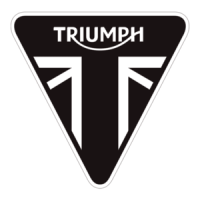


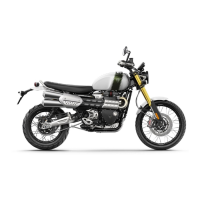
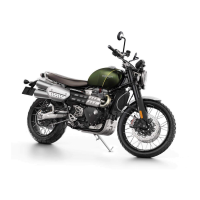


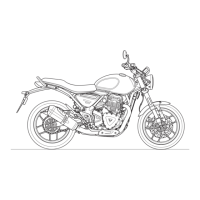


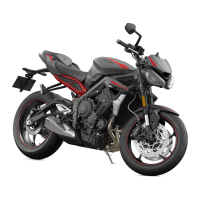

